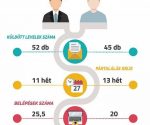Unbiased mobile ad mediation: The new choice on the block

SPONSORED:
This sponsored post is produced by Upsight.
There’s a lot of choice when it comes to ad mediation platforms to help mobile apps monetize their users through advertising. Of course, the reason and main motivator to use a mediation platform is that it allows app developers to utilize many different ad networks so they can get optimal performance and fill rate, or “yield” from their ad placements. In most cases, a single ad network simply doesn’t have enough ad demand to fill all requests from an app with global traffic.
The early days of ad mediation
The early innovators of ad mediation included platforms like Burstly, MoPub, and Ad Marvel, who pioneered the primary business models that exist today. Burstly in particular, gained a lot of traction and was the most widely used platform during its time before being acquired, and ultimately shut down by Apple.
In general, the early mediation platforms didn’t have their own ad demand or own ad networks, and were primarily concerned with offering self-serve tools to allow developers and publishers to optimize various ad networks that could be connected through SDK adaptors or through server-to-server integration. Some even included managed services to help optimize the networks for a fee or revenue share. Because these platforms didn’t have their own advertising demand, they were truly unbiased when it came to choosing which ad network would serve an ad.
Fast forward to now
All that has changed. Now, most mediation platforms have added their own ad demand to their platforms and have adopted a business model where they allow publishers to mediate third-party ad networks for free, only taking a revenue share when an ad is served by their own advertising demand.
This is the general model used by platforms such as MoPub, AdMob, Fyber, and Supersonic. On the other hand, platforms such as Upsight Ad Mediation (formerly AdRally by Fuse Powered) don’t have its own advertising demand and operates as an unbiased optimization platform where publishers can choose to pay a fee, or a revenue share from all ads served.
The choice: ad mediation with or without ad networks?
So, what’s the difference? Two questions arise from these distinct business models: Can a mediation platform that only profits when their own ads are served truly be unbiased when given the optimization controls? Conversely, will an unbiased ad mediation platform outperform enough to justify taking a revenue share from all ads served?
Fundamentally, the mediators who have their own demand are competing directly against the third-party ad networks and exchanges available within the mediation platform. Each platform has their own decision-making optimization logic that decides which ad get served: their own ad, or one from their competitors.
The precise detail behind the decision logic or optimization algorithms are not easily understood by most users or the third-party ad partners who participate within the mediation. Due to the competitive nature of mediation, it would seem the platform itself is not inherently aligned with the goals of the publishers using them. These platforms are incentivized to choose their own demand wherever possible. However, in their defence, they do provide all the connectivity and tools for mediating their competition for free. So it really is a pros and cons scenario.
A truly unbiased mediation platform, such as Burstly was, does not have its own ad demand and therefore, is not a competitor of the third-party advertising solutions it is mediating. The drawback here is that an unbiased mediation platform doesn’t have the ability to monetize off its own advertising demand and must either charge a fee, or take a revenue share across all ads served. Burstly offered both a fee based model, and a revenue share model for those who wanted Burstly to perform the optimization for them.
The benefits of unbiased ad mediation
So does a fully managed, unbiased mediation platform outperform the more traditional mediators enough to justify a revenue share across all ads?
The answer of course depends on the strength of the optimization algorithms, technology, team, and techniques. The fully-managed solution has some inherent advantages in that a single team has the ability to manage not only the optimization of the mediation stack, but also manage each of the accounts held with the third-party ad networks. The advantage is there are “tricks of the trade” that can be set up to allow for advanced optimization techniques that most mediation platforms cannot set up (i.e. calling each ad network multiple times in the mediated “waterfalls”, and setting up and running multiple, simultaneous floors on the RTB exchanges). These techniques have proven to more than cover the costs of the revenue share at Upsight and have consistently delivered higher net-net revenues to publishers.
These are the factors you need to consider when deciding to use an unbiased mediation platform versus a self-serve solution — and both have their pros and cons.
I suppose there is still one question you need to ask yourselves — do you want to focus your efforts on making great apps, or do you want to spend significant man-hours everyday integrating, optimizing and reconciling many advertising networks and exchanges?
Darren Keyes is VP Platform Mediation at Upsight.
 Dig deeper. Download The Art and Science of Mobile Ad Mediation to learn more about the power of unbiased ad mediation.
Dig deeper. Download The Art and Science of Mobile Ad Mediation to learn more about the power of unbiased ad mediation.
Sponsored posts are content that has been produced by a company that is either paying for the post or has a business relationship with VentureBeat, and they’re always clearly marked. The content of news stories produced by our editorial team is never influenced by advertisers or sponsors in any way. For more information, contact sales@venturebeat.com.








Comments are closed.